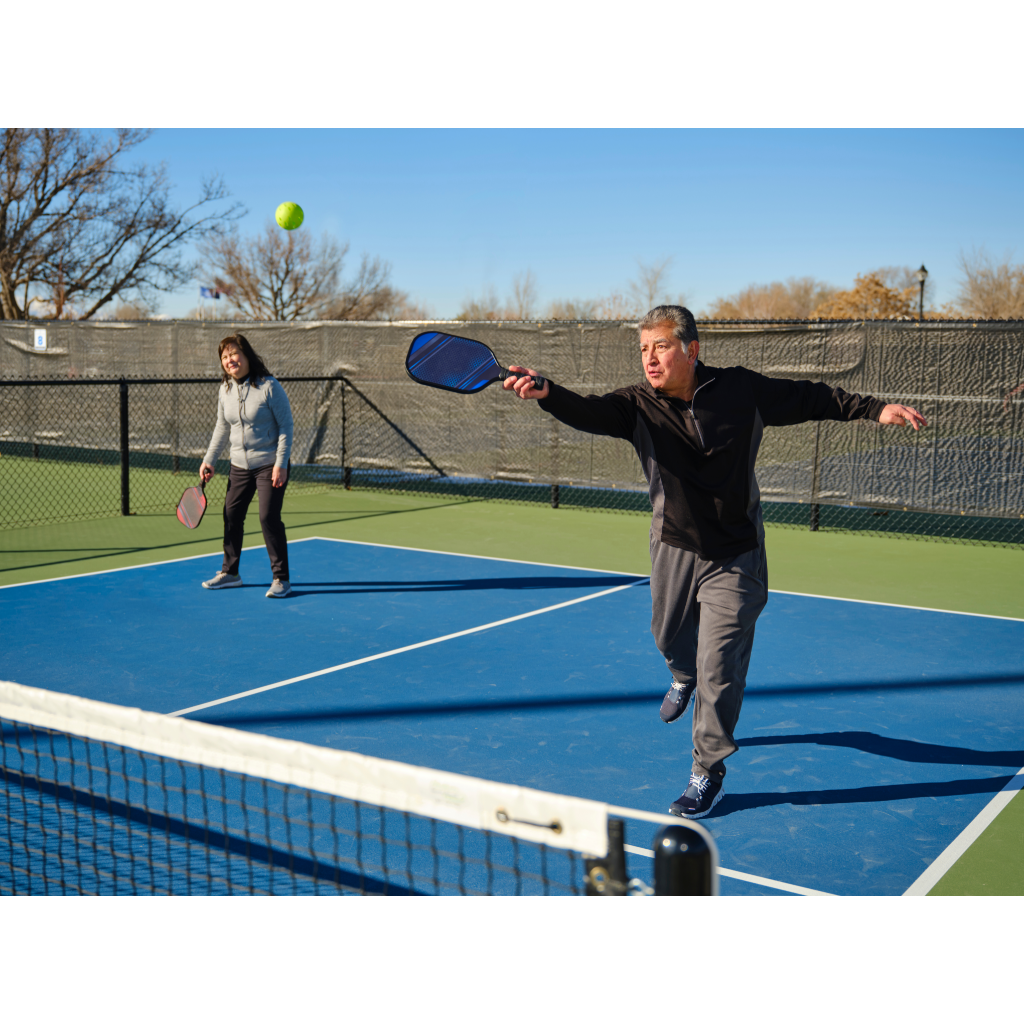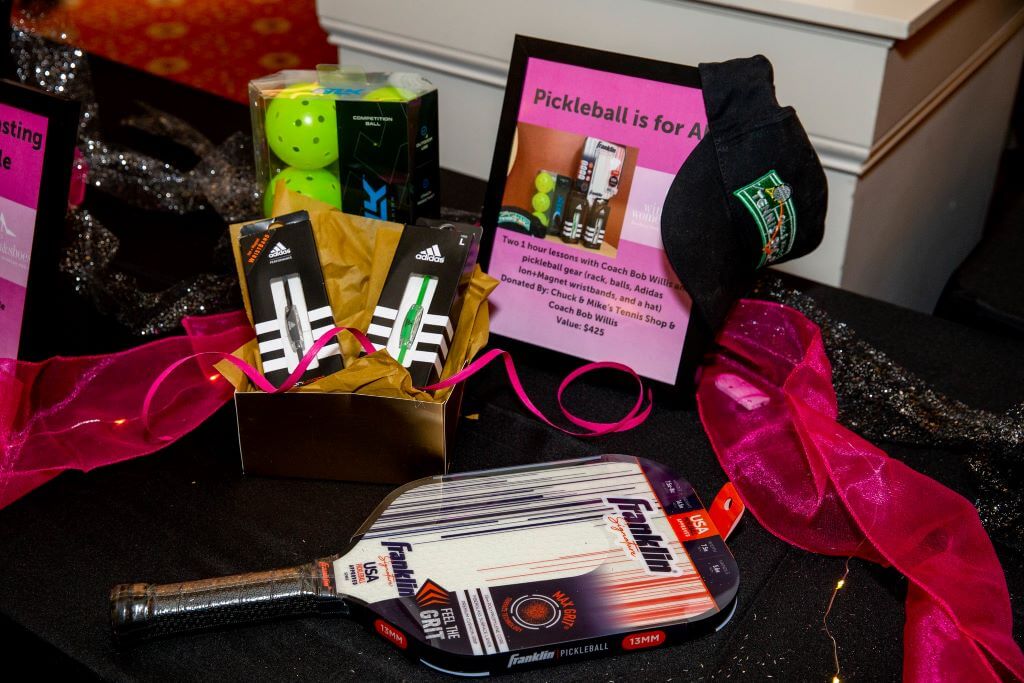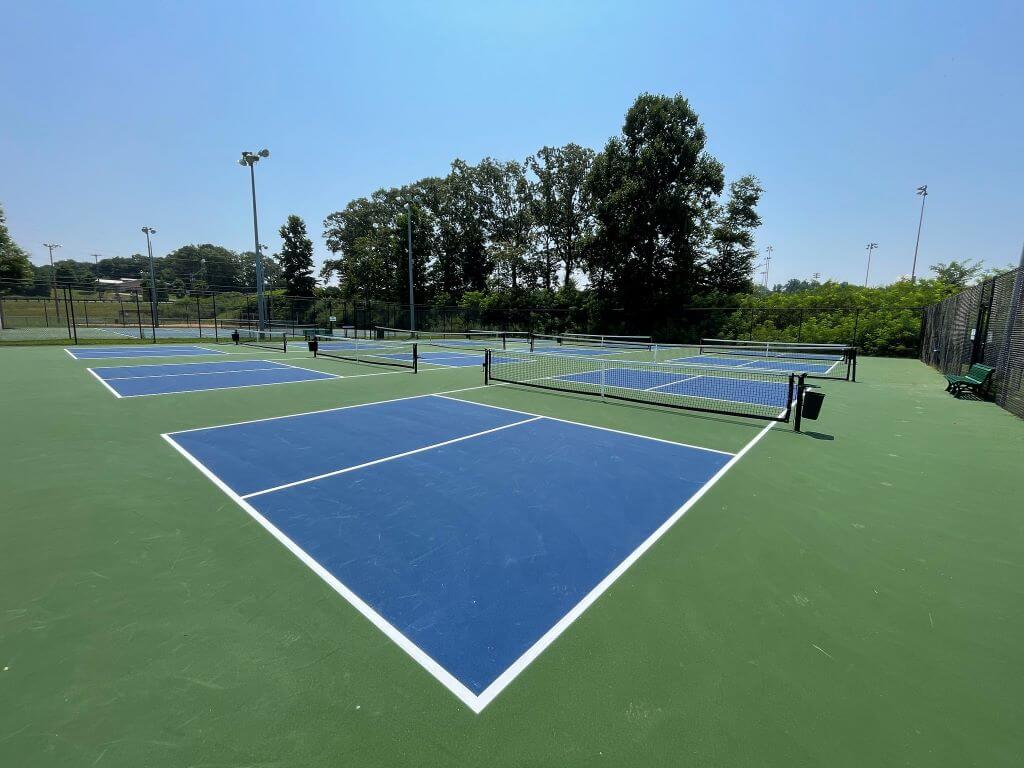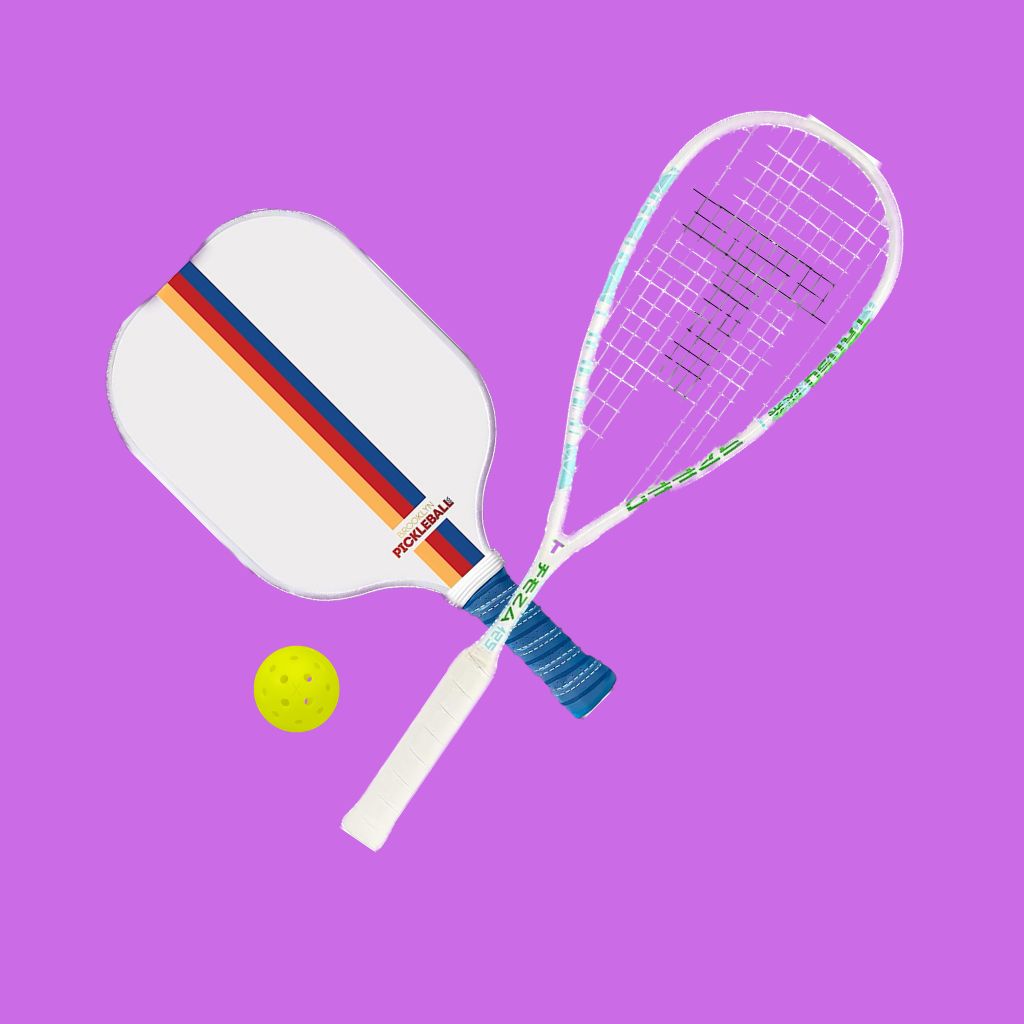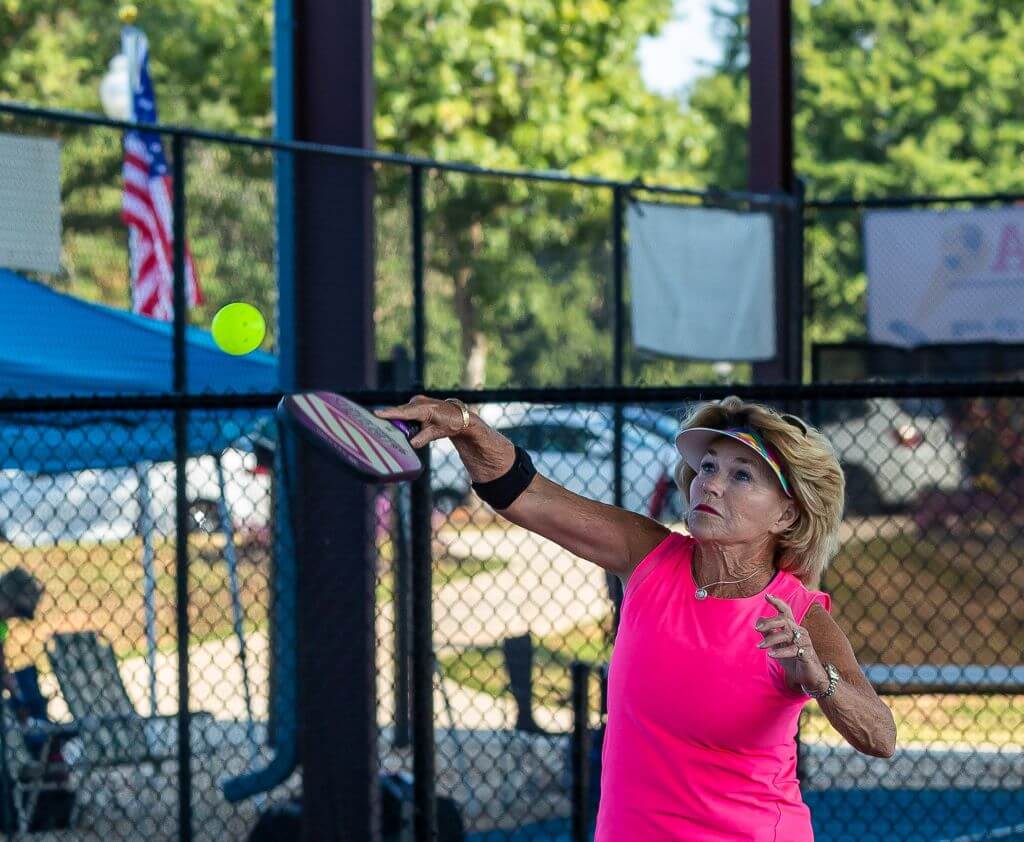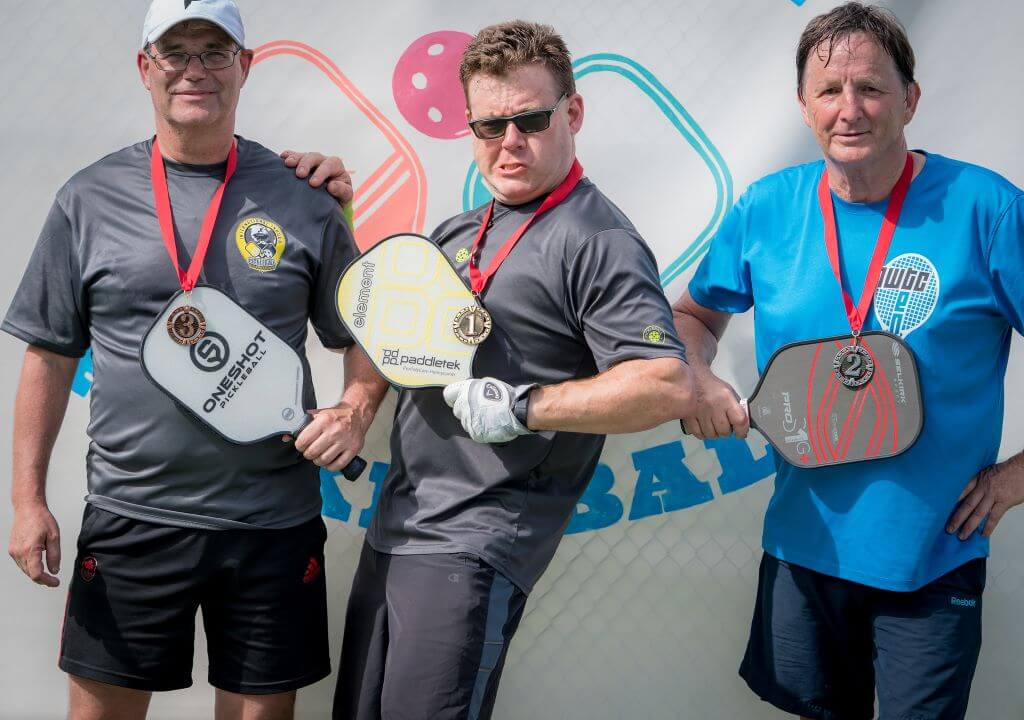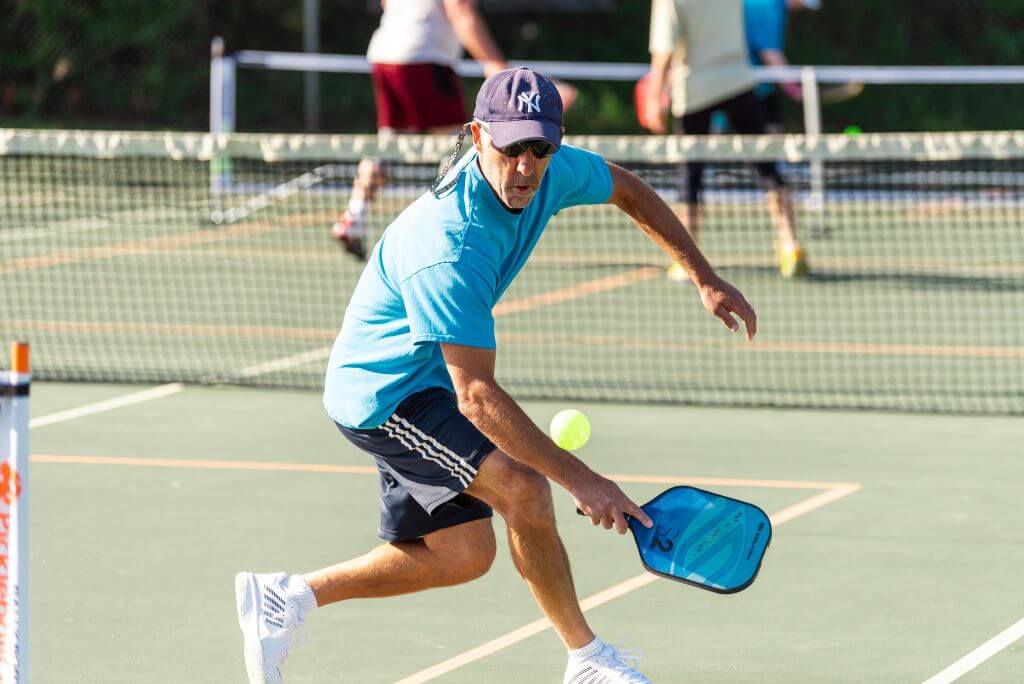Looking for a complete pickleball doubles rulebook to get you prepped for an upcoming tournament? Or maybe you’re always playing with someone who seems to be making up the rules as they go just to beat you in rec play?
In either case, it’s always handy to know the pickleball doubles rules (and just pickleball rules in general) before you get out and play. After all, you don’t want to be taken advantage of. And you can avoid committing any unnecessary faults by simply knowing the rules.
A disclaimer before we dive in: Pickleball is fairly new. It was created in 1965 but only became popular a handful of years ago, so the rules will sometimes vary across tournaments. In fact, new official pickleball rules are emerging yearly. We will get into all of that and more below.
Pickleball Glossary for Beginners
Before we jump into the complete pickleball doubles rulebook, it’s important to be familiar with all the specific pickleball terms and jargon if you want to know how to play pickleball.
Basic Pickleball Court Terms
Baseline: The 20-foot line at the back of the court where players must serve behind.
Kitchen Line: The kitchen, also known as the Non-Volley Zone (NVZ), is an area that extends 7 feet from the net on each side. It has two sidelines (lines at the edge of the width of the court) and a non-volley line that mark the end of the 7-foot area of the kitchen.
Side Line: This is the 22-foot line that extends from the baseline to the net.
Pickleball Shot Terms
Side Out: When the serving team loses both of their serves, the opponent gets the ball. This is called a side out.
Volley: A shot where a player strikes the ball out of the air before it can bounce on the ground.
Erne: This is a shot where a player jumps over the line that separates the kitchen from the rest of the court in order to hit a volley. The player then lands with their feet out of bounds or outside of the court.
Around-The-Post: A shot where a player hits the ball around the side of the net post and into the court.
Dink: Most commonly used shot in pickleball that is hit at the kitchen line. Preferred grip is continental, although some ex-tennis players will use eastern or semi-western grips. Use the grip that feels the most comfortable to you.
3rd Shot Drop: This shot is hit at the baseline off a return of serve. Think of it as an elongated dink.
Drive: Similar stroke to a basic tennis forehand and backhand. Most aggressive players will opt to hit a drive instead of a 3rd shot drop.
Block: This stroke occurs off an attacking ball and is hit from midcourt to the kitchen line. The paddle involves little movement and absorbs power from the opponent’s shot. The key is to drop the block back in the kitchen to reset the point.
Serve: A forehand or backhand stroke used at the baseline to start the rally. There are two types of serves—the drop serve and volley serve.
Return: A shot that is hit by the receiving player after the ball has been served by the opposing team.
Pickleball Scoring Rules in Doubles: Complete Pickleball Doubles Rulebook
The pickleball doubles rules comes from the official pickleball rulebook, which was created by members of USA Pickleball. The pickleball scoring rules can get a little tricky when playing doubles. Pickleball player positions and who is serving impacts the scoring and specific rules associated with it.
Did you know that being out-of-position when the score is called means a fault? That’s why it’s crucial to understand the pickleball scoring rules.
Let’s talk about the rules of pickleball doubles (and singles!) in detail. But first, what type of scoring is used in pickleball?
What is Side-Out Scoring?
Unlike tennis that uses rally scoring, pickleball uses side-out scoring. This means that the only side that can score points in pickleball doubles and singles is the serving side—with the exception of special tournaments like Major League Pickleball, which follows the rally scoring format.
We repeat: Only the serving team can score points. The receiving team has to wait for their chance to serve before they can start scoring.
How to Score in Doubles
At the start of a game, the team that serves gets one opportunity to score points. This is because only one person gets to serve and is known as the second server in regards to scoring. In most unsanctioned and sanctioned tournaments, the second server from the initial serving team and first server from the opposing team will get a band to wear around their wrist. This signifies to the referee and players on court who served first for their team.
Note: Unless there is an official referee on court, the second server calls the score 0-0-2 (serving team score-returning team score-second server). The only time a doubles team gets one opportunity to score points is at the start of the game. However, the server continues to serve as long as they win points, alternating from the right/even to the left/odd side of the court.
Once the serving side loses a rally, they give the ball to their opponents. This triggers the pickleball doubles scoring rule in which both players get the opportunity to serve and score points.
Say the initial serving team (A) scores 3 points then loses the fourth. Now, the initial returning side (B) gets the ball to serve. Here’s how it will go:
- The first server will call the score 0-3-1 (0 = team A score, 3 = team B score, and 1 = first server).
- Then, team B scores 4 points and loses the fifth point. The score will now be 4-3-2. The 2 signifies that the team B’s second player gets to serve.
- This scoring structure remains consistent until one team gets to 11 and wins by 2 points.
Rally Scoring Rules in Doubles
There are some pickleball tournaments, like the Major League Pickleball event, where players follow rally scoring. Rally scoring is where each point won counts toward their overall score. Because the game typically goes faster in this format, the team that gets to 21 first (win by 2) wins.
Unlike traditional pickleball doubles scoring, during rally scoring, the serving side players do not switch sides after winning a point. Instead, they switch servers. This means that if player A serves on the right side and wins the rally, player B will serve on the left side.
One major key to keep in mind with rally scoring is that the right side player always serves on their team’s even score. The left side player serves on their team’s odd score. The pickleball player position is important to remember, because if their team isn’t serving on the correct side, it results in a fault and their opponents gain a point and get the ball back to serve.
Note: The only time players can switch positions (serving sides) in doubles rally scoring is if they inform the referee during a time-out or end change and the referee validates the team’s request.
One of the exciting parts about rally scoring in doubles is when one team gets to 20, they can only win off of their serve. This gives the returning team the chance to come back and win. However, when one team gets to 20 and the other team gets to 18, both sides can now only score off of their serve.
How to Score in Singles
Although this is a complete pickleball doubles rulebook, if you want to dabble in singles, why not learn some of the rules? Singles follows similar pickleball scoring rules. However, there is no first and second server. After a coin toss, the winning player chooses to serve, receive, or defer.
The server only calls two numbers (their score, then their opponents score). The same pickleball serve rules apply in singles as they do in doubles. This means players can only score points off of their serve.
Once the server has been established, play begins at 0-0, with the player serving on the right side. The server switches from right to left whenever they score a point, stopping only when they lose a rally.
Remember: If the server has an even score, they must always serve on the right side. If the server’s score is an odd number, they always serve on the left side. If a player is in the incorrect position as they return serve, the other player gains a point. This also applies to rally scoring, which we will talk about in a bit.
The first player to get to 11 points (win by 2) wins the game. After each game, the players have two minutes to start the next game. If the singles match goes to a third game, players will have one minute to switch sides when one person gets to 6 points.
Rally Scoring in Singles
Rally scoring in singles is almost identical to rally scoring in doubles. The games are played to either 15 or 21 (win by 2) depending on the tournament. Whoever wins a rally get a point, regardless if they did the serve or not.
Players switch ends when one person gets to 8 in a game to 15, and 11 in a game to 21. During the change of ends, players get two minutes until the start of play.
When to Change Ends
In a traditional scoring game to 11, each team plays an entire game on one side of the court. When the first game is over, players get two minutes to recover and change ends. After the two minutes are up, the players must be in their correct position to begin play.
If a match goes to a third game, each team will switch ends when one team gets to 6. The team who is serving during the switch will remain serving. The change of end rules also apply to singles.
During a rally scoring game to 21, each team changes ends when one team reaches 11.
Pickleball Serve Rules
In the complete doubles pickleball rulebook, understanding the pickleball serve rules is important because:
serving = the opportunity to win points
If you hit an illegal serve, serve on the wrong side, or if you and your partner are in the wrong position during a serve, it results in a fault. Let’s go over the serve rules.
How to Hit a Legal Pickleball Serve
There are two types of serves: a volley serve and a drop serve. A volley serve is when you hit the ball out of the air with either a forehand or backhand motion.
Here are rules for hitting a legal pickleball volley serve.
- Your arm must go in an upward direction upon contact with the ball.
- The highest part of the paddle head cannot be above the wrist on contact.
- Your contact point should be below the waist.
- Both feet must be behind the baseline before and during contact. After contact, one foot must be established behind the baseline before moving to the next shot.
These are the rules for hitting a legal pickleball drop serve.
- You can either drop the ball from one hand or from the paddle face.
- You cannot throw the ball downward or toss the ball up to create more speed on the drop serve.
- Both feet must be behind the baseline before and during contact. After contact, keep one foot behind the baseline before moving to the next shot.
If the serving side violates any of the volley or drop serve rules, they lose the serve (and their opportunity to score points).
Correct Serving Pickleball Player Positions
We mentioned earlier in this complete pickleball doubles rulebook that each player designated to serve first wears a wristband to show the referee and other players on court that they are, in fact, the first person on each team to serve.
The person serving first always starts on the right side of the court. As long as the server wins the rally, that person switches from right side to left side and back again until they lose serve. If a serve is hit from the wrong side based on the score, the referee can stop play and call a serving fault, resulting in loss of serve.
So what’s the reason for the “first-server” wristband? This helps ensure that each player is in their proper position at the start of each rally. If either team’s score is even, the person with the wristband either serves or returns on the right side. If the score is odd, the person with the wristband serves or returns from the left side of the court.
Calling the Score
- If there is no referee, the serving player must call the score audibly before serving.
- If there is a referee on court, the serving player must wait for the referee to call the score out before the player can start their serving motion.
Once the serve is called, the server has 10 seconds to serve the ball. Violating any of these pickleball rules will result in a fault. Though, there are some cases where the referee will call a warning first.
2 Bounce Rule
During doubles play, the 2 bounce rule in pickleball states that the ball must bounce once on each side of the court before either team can volley out of the air. Basically, when the serving side serves the ball, the returners must let the ball bounce before hitting it. Then, the serving side also has to let the ball bounce before they return it.
A “pickle” happens when a player volley’s off of the serve or the return. Doing a pickle will result in a fault. When the returner volleys the ball out of the air off of the serve, the serving team can choose to stop play and add a point to their score. And if the serving side volleys the ball off of the return, the returners can stop play and call a “fault”.
It’s also important to note that the ball cannot bounce twice on your side of the court before you hit the ball. You will be giving the other team a point.
Kitchen Line Rules
Section 9.A.-C. of the pickleball doubles rulebook states that when you’re hitting the ball out of the air, you need to establish your feet behind the kitchen line. And you must be sure that your feet stay behind the line during the swing and follow through.
If your momentum causes your body or paddle to touch anywhere in the kitchen, it’s a pickleball kitchen violation.
You can, however, step into the kitchen after the ball bounces. This is called a dink, which players frequently use when playing pickleball.
A player may return the ball, even if their opponent is still in the kitchen. However, if you are in the kitchen or on the kitchen line and push off to hit the ball out of the air, this results in a fault.
Time-Out
Each team has two time-outs that are one minute long per game when playing a game to 11 or 15. If games are played to 21, players can have three time-outs. The players must inform the referee or opponents that they are taking a time out. If a player does not resume play after the time allotted, they may get a warning from the referee or get a fault.
New Rule Changes for 2023: Complete Pickleball Doubles Rulebook
What would a complete pickleball doubles rulebook be without the latest pickleball updates? If you’re entering a tournament, you need to be aware of some specific pickleball doubles rules (and singles rules) so you won’t get penalized during play.
1. Apparel Must be a Noticeably Different Color than the Ball.
This new rule ensures that everyone can see the ball clearly during play. Many people complained that the ball can get “lost” in the background of players’ clothing. So, it’s important to find out what the color of the ball is at the tournament.
2. Cannot Create Spin Before Striking the Ball on a Serve.
During your serve, you must “float” the ball without any spin before contacting the ball. That is to say—you cannot add a spin with your serving hand in pickleball. The referee or your opponents will decide whether or not you added spin on the ball before contact.
3. You May Ask the Referee or Opponents About Correct Server and Player Position.
The server can ask the referee or their opponents, “Am I good?” before they serve. This is a good way to check your position, since, as mentioned earlier, standing on the wrong side of the court during your serve will result in a fault. Take advantage of this if you’ve lost track of your score.
4. Players can Stop Play if the Score is Called Wrong Before Return of Serve.
If a player stops the rally after the return of serve is hit, this results in a fault. You need to call the mistake before you return the serve.
5. Equipment Time-Out’s are Available
If a player needs to switch out a paddle, ball, or any other piece of equipment deemed reasonable and safe for play, the referee can call an equipment timeout.
Closing Remarks
Understanding the complete doubles rulebook is especially important when entering a tournament. However, every tournament is different and may have their own rules. There are unsanctioned and sanctioned pickleball tournaments, so do your research before stepping onto the court.
From personal experience, every tournament, local or national, sends an email with the pickleball rules and format. READ the email. If you do not get an email, ask the tournament director or volunteers what rules are first.
As they say—better safe than sorry!























